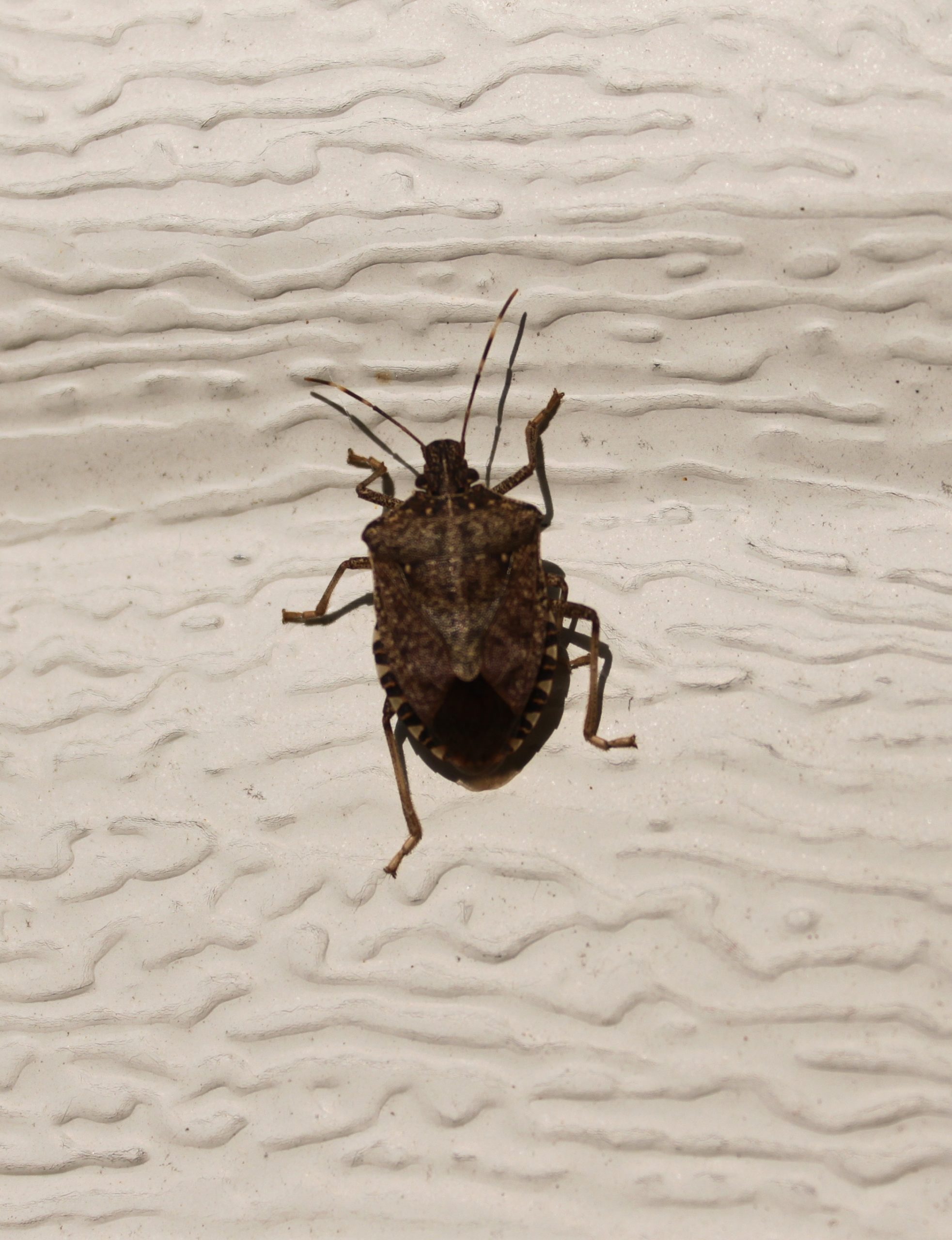The annoying dive bombers you have
been battling are called brown marmorated stink bugs. This irritating insect was accidentally introduced into
eastern Pennsylvania a number of years ago from China. Stink bugs get
inside houses through tiny cracks and crevices, looking for a warm place to
spend the winter. If you step on one in an enclosed area (which I’m not
recommending) you will learn why they are called “stink” bugs.
Stink bugs can be a significant
agricultural pest in orchards, where they do damage to apples and pears. Inside
the home, however, they are harmless. They do not eat wood, nest, swarm, damage
clothing, have wild parties, borrow your car without asking, or harm people,
except to drive them a little crazy (ironically, a stink bug is buzzing around
me while I write this).
So the Big Question everyone is
asking is “What can I do about them,” which roughly translates as “What can I
spray on them that will annihilate them?”
Unfortunately, the answer is nothing.
Yes, there are pest companies and
enterprising entrepreneurs who will gladly take your money to “get rid of”
stink bugs. That’s fine if you want to flush your money, along with some stink
bugs, down the toilet. It’s sort of like spraying for house flies. Sure, if you
fill your house with a cloud of insecticide, you will kill the house flies. But
on his way out the door, your exterminator will let in a few more and you’re
back where you started, a few hundred dollars lighter. In addition, if you do
spray an insecticide, any stink bugs that expire in out-of-the-way places like
attics and wall voids, now become food for critters that do cause harm like carpet beetles and mice.
The best advice we can offer is to
locate the openings where the insects gain access and seal them.
Typically, stink bugs will emerge from cracks under or behind baseboards,
around window and door trim, inside air conditioner openings, and around
exhaust fans or lights in ceilings. Seal these openings with caulk or other
suitable materials to prevent the insects from crawling out. Make sure doors and windows are well
sealed on the outside as well.
Both live
and dead insects can be removed from interior areas with a vacuum cleaner,
although some people have reported the vacuum cleaner bag can absorb the odor,
and then transmit it back out through the vacuum’s exhaust. For this reason,
you may want to invest in a “bug vac” (the type used by kids to collect and
examine insects), or an inexpensive hand vac. While the chamber that holds them
gets stinky, it may be the least objectionable way to collect stink bugs. Once
the chamber has reached capacity, flush the bugs down the toilet.
Although aerosol pyrethrum foggers
will kill stink bugs that have amassed on ceilings and walls in living areas,
it will not prevent more of the insects from emerging shortly after the room is
aerated. For this reason, use of these materials is not considered a good
solution to long-term management of the problem. Spray insecticides, directed
into cracks and crevices, will not prevent the bugs from emerging and is not a
viable or recommended treatment.
The good news is, as winter comes,
the stink bugs will go into a sort of hibernation phase. The bad news is, they
will be back in the spring. So until scientists come up with a better solution,
seal up your house the best you can and keep that vac handy.
For more
information, go to:
http://ento.psu.edu/extension/factsheets/pdf/BrownMarmoratedStinkBug.pdf
Gardening
Question? Ask a Master
Gardener! Call 610-696-3500 or
email chestermg@psu.edu.
• Nancy
Sakaduski is the Chester County Master Gardener Coordinator. Master
Gardeners are trained volunteers who educate the public on gardening and
horticultural issues. In Chester County, they operate through the Penn
State Cooperative Extension office in West Chester. Nancy lives in
Pennsbury Township. She can be reached at nds13@psu.edu.
About Nancy Sakaduski
Nancy Sakaduski is a Master Gardiner with Penn State Extension of Chester County.





What a mess these shield-backed creatures are! They like appearing on curtains and windows/sills, coming out of hiding spots (tops of door & window jams and in dark, camouflaging spaces including dark colored folded clothes not put away) when the sun is out and can warm them. While they sunbath, hold a wide-mouthed jar or empty gatorade 20 oz. filled 1/3 way with water and start grabbing them one by one and drop them the jar, for easy disposal down the toilet. Don’t hold them in your hand as they may expel an orange dye that will stain your palms for a few days. They eliminate this orange-brown “drip” spots that resemble splattered coffee on painted woodwork & draperies..easily cleaned with soap and water. I understand that Grackles eat them. The key is to get them rounded up late summer/early fall before they go into hibernation and hiding when the weather is in the 50’s or colder. Good luck!